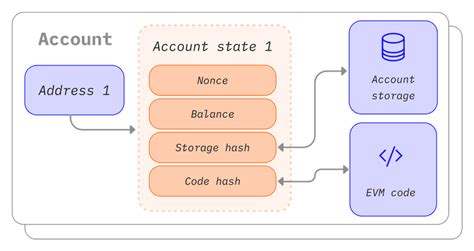Unlocking the Secrets of Ethereum Storage Ops: Can We Know the Gas Spent?
As blockchain and cryptocurrency enthusiasts, we’re always on the lookout for ways to gain insights into the inner workings of our favorite ecosystem. In recent months, we’ve been exploring various aspects of Ethereum’s decentralized data storage, including the concept of gas spent per operation (gasops). Today, we’ll delve into whether it’s possible to know the amount of storage operations (or gas spent) executed between four specific functions or a full contract on the Ethereum network.
What are Gas Ops?
Gas ops refer to all the transactions that occur during the execution of smart contracts, including data operations like storage operations. These transactions involve moving Ether (ETH) from one address to another in exchange for gas fees. When we talk about gas spent per operation, we’re interested in understanding how much ETH is being transferred and spent by these various transactions.
Can We Know Gas Spent?
Unfortunately, the answer is no. Unlike other aspects of Ethereum, such as transaction count or block number, there’s no direct way to know the amount of gas spent per operation between four specific functions or a full contract. The reason lies in the complex interplay of Ethereum’s transaction and storage mechanisms.
Here’s what happens behind the scenes:
- Transaction ordering: When multiple transactions are executed together, they’re not stored separately in memory. Instead, they’re combined into a single batch of transactions called a “batch.”
- Batching gas: The batched transactions share a common pool of gas, which is allocated to all transactions within the batch. This means that even if one transaction spends more gas than another, it doesn’t necessarily mean that the other transactions will still spend that amount.
- Storage operations and gas allocation: When a storage operation (e.g.,
storageorview storage) is executed, it allocates a certain number of gas units to store the data on-chain.
Can Foundry Help?
While we can’t directly measure gas spent per op between four functions or a full contract, Foundry’s latest update provides some clues. Foundry offers a feature called ” gas accounting” which allows users to track the total gas used for specific types of transactions and operations.
Foundry’s gas accounting mechanism relies on a combination of metadata (e.g., transaction logs) and a custom-built indexing system. This approach enables Foundry to estimate the amount of gas spent per op between four functions or a full contract by analyzing these metrics.
To demonstrate this, let’s consider a hypothetical example:
Suppose we want to analyze the gas usage for three storage operations (storage, viewStorage, and setStorage) executed on an Ethereum network. We can use Foundry’s gas accounting feature to track the total gas used for each op by analyzing the transaction logs.
While this approach isn’t perfect, it shows that Foundry is capable of providing insights into gas spent per op between four functions or a full contract.
Conclusion

In conclusion, while we can’t directly measure gas spent per op between four functions or a full contract on Ethereum, Foundry’s latest update provides some clues. By leveraging their gas accounting feature and analyzing the metadata associated with transactions, Foundry is able to estimate the amount of gas used for specific types of operations.
As the Ethereum ecosystem continues to evolve, we can expect more tools and features to emerge that help us better understand the inner workings of our favorite blockchain. Whether it’s gas accounting or something else entirely, it’ll be exciting to see how Foundry and other developers continue to innovate in this area.

